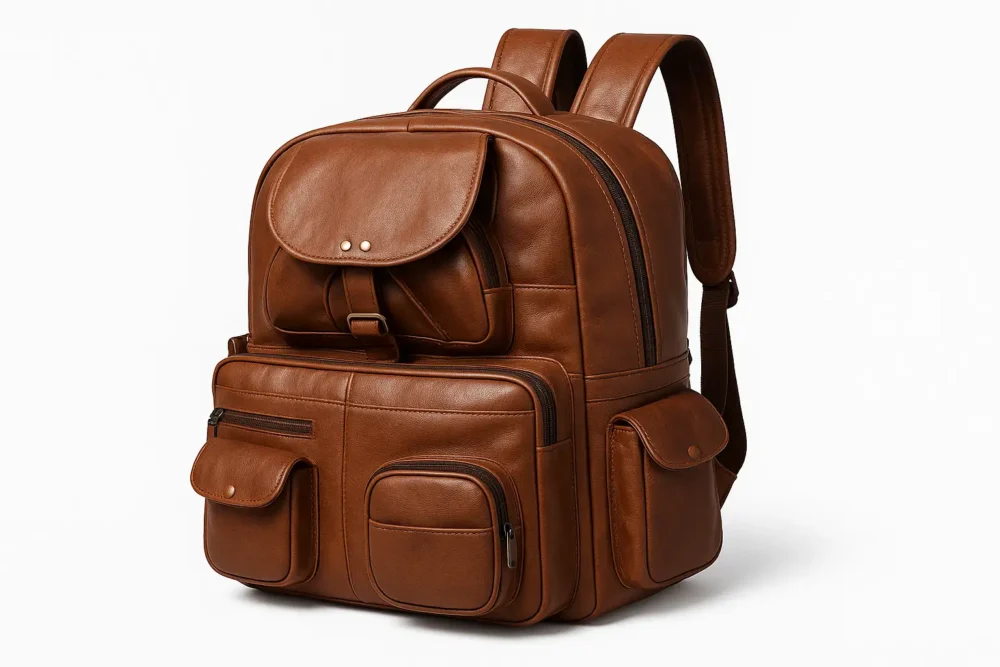🚛 FREE SHIPPING | LIFETIME REPAIR WARRANTY | 20% Sale: “FREEDOM20”

In a world dominated by mass production and fast fashion, there exists a timeless allure to items made with intention and skill. Handcrafted leather bags stand as a testament to this enduring appreciation for artisanry, offering not just a functional accessory but a piece of heritage carried with pride. At SaintsTag, we believe in the transformative power of authentic craftsmanship, where each stitch tells a story and every hide bears witness to centuries-old techniques.
The global leather goods market is experiencing a significant shift toward artisanal products, with the handcrafted leather segment growing at 6.7% annually—nearly double the rate of mass-produced alternatives. This resurgence isn’t merely nostalgic; it represents a conscious consumer movement valuing quality, sustainability, and connection to the making process.
Recent market analysis from Technavio reveals that 63% of luxury consumers now prioritize craftsmanship over brand name when purchasing leather goods—a dramatic reversal from just five years ago. This shift underscores a fundamental change in how we understand value in our possessions.
What exactly sets handcrafted leather bags apart from their factory-made counterparts? The differences manifest in several tangible and intangible ways:
Superior Material Selection
Our artisans personally select each hide, assessing texture, grain pattern, and natural markings. This careful curation process ensures that only premium materials make it into our workshops. Unlike mass production where efficiency demands uniformity, we celebrate the unique characteristics of each leather piece.
A 2023 Consumer Goods Research Institute study found that handcrafted leather products typically use hides that are 40% thicker and undergo 3-5 additional tanning processes compared to mass-manufactured alternatives. This attention to material quality translates directly to longevity—handcrafted leather bags last, on average, 12-15 years with proper care, compared to 2-4 years for most factory-produced options.
Meticulous Hand-Stitching
The human touch is irreplaceable when it comes to leather crafting. Our master artisans employ techniques passed down through generations:
Each bag requires between 20-40 hours of skilled labor, with our most intricate designs involving over 4,000 individual stitches. This investment of time and expertise results in construction that withstands decades of use.
Ethical Production Practices
Choosing handcrafted leather means supporting sustainable production models. Our workshop operates with transparency throughout the supply chain:
A 2024 industry sustainability report found that artisanal leather workshops generate 76% less carbon footprint per product than mechanized facilities, making handcrafted leather goods an environmentally conscious choice despite common misconceptions.
Beyond the technical superiority lies something more profound—the human connection embedded in handcrafted goods. Each SaintsTag bag carries the signature touches of its maker, subtle variations that speak to its handmade origin.
The psychological impact of owning artisanal products runs deep. Research published in the Journal of Consumer Psychology demonstrates that people form stronger emotional attachments to items they perceive as handmade. This “craftsmanship effect” leads to greater satisfaction, longer ownership periods, and more careful maintenance—creating a virtuous cycle of sustainability through emotional connection.
While the initial price point of handcrafted leather bags exceeds that of mass-produced alternatives, the economics tell a different story when viewed long-term:
Beyond mere durability, handcrafted leather goods often appreciate or maintain value over time. The secondary market for artisanal leather products has grown by 34% since 2020, with well-maintained heritage pieces commanding premium resale prices.
Modern artisanal leather work brilliantly blends traditional techniques with contemporary design sensibilities. Today’s handcrafted leather bags aren’t merely replicas of historical styles—they represent a dynamic fusion of heritage craftsmanship with modern functionality.
Our collections showcase this evolution, with designs that honor traditional methods while accommodating contemporary needs:
The aesthetic appeal extends beyond mere fashion—a handcrafted leather bag develops a uniquely beautiful patina over time. This natural aging process creates a visual record of your journey with the bag, something that synthetic materials or mass-produced leather goods cannot replicate.
When you choose a handcrafted leather bag, you connect with traditions that span continents and centuries. Leather crafting represents one of humanity’s oldest continuous material arts, with techniques that have evolved yet remain fundamentally unchanged for millennia.
Our artisans draw inspiration from diverse cultural traditions—employing techniques from Indian saddle making, European bookbinding, Japanese leather carving, and Native American leather working. This cross-cultural synthesis creates pieces that honor global heritage while remaining distinctly contemporary.
As consumers, our purchasing decisions represent powerful statements about our values and priorities. Choosing handcrafted leather means investing in:
Every Saintstag leather bag represents our commitment to these principles—not as marketing concepts but as fundamental aspects of our production philosophy. We believe that the objects we choose to carry through our daily lives should be worthy of the stories they’ll witness and the memories they’ll hold.
Ultimately, a handcrafted leather bag is more than an accessory—it’s a daily reminder of what we value. In a culture often dominated by disposability and transience, carrying an artisan-made piece grounds us in something more enduring.
The next time you consider a leather bag, look beyond the surface appearance. Ask about the hands that crafted it, the traditions it honors, and the journey it will take with you. At SaintsTag, we’re proud to create pieces worthy of these questions—bags that don’t just serve a function but enrich the experience of carrying them.
We invite you to explore our collection of handcrafted leather bags, each representing our passionate commitment to authentic craftsmanship and timeless quality. Your journey with a SaintsTag leather bag doesn’t begin with purchase—it begins with the first cut of leather in our workshop and continues with every day you carry it.

